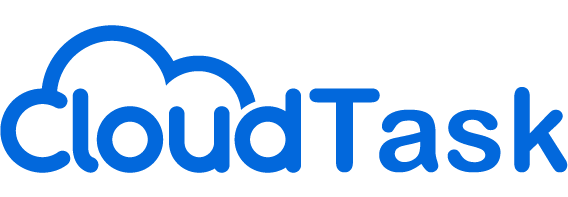Too many companies are prone to popping champagne and celebrating exciting new deals that come in. However, as time goes on, it can be easy to take those clients for granted.
The best SaaS companies know that half of sales is retention. They focus on keeping those clients for many years, not just during a single contract period. Below, we’ve compiled some lessons from leading SaaS companies that can help you align your focus and take your customer satisfaction, retention, and success to the next level.
Lesson #1: Anticipate and Analyze Customer Needs
Workday, an enterprise solution for HR management, makes collecting customer information a priority. The company regularly gathers survey data both from their key contacts and from executives at their client companies.
This approach allows them to observe both the wants/needs of the knowledgeable in-the-weeds professional, as well as to understand the quality of experience their company is providing to the client’s executives (who ultimately sign their contracts and pay them).
Workday has also invested in developing applications and processes to predict customer favorability, so they can use that data as another avenue for making improvements. This solution works especially well because they can use the data from key actions a customer takes, as well as the specific feedback they provide, to create processes that are more effective and efficient.
Lesson #2: Word-of-Mouth Matters
Slack is the fastest-growing SaaS company of all time. The collaboration hub, which allows teams to share and log information in a group setting, has expanded its reach through fanatical word-of-mouth support.
The focus for Slack’s management team is customer experience; they determined that product use isn’t their marker for success, nor is opting for a paid version of the service. Instead, their focus is on whether their clients would recommend them to others.
Lesson #3: Define Your Team’s Roles
Edgar founder Laura Roeder noted that you wouldn’t ask every team member, regardless of knowledge and experience, to write code during their first month on the job at a SaaS company.
In the same way, she believed providing customer support and ensuring customer success are distinct and important skills, and shouldn’t just be considered a standard service that any and all team members will provide. There’s an old adage that says, “If it’s everybody’s job, it’s nobody’s job.”
By letting everyone focus on the areas they’re best at, you’ll allow your team to reach its full potential. Salespeople can focus on sales, without worrying that someone will drop the ball on relationship management with their existing clients. And you’ll reduce the risk of burnout, too.
Lesson #4: Measure the Right KPIs
Your top measure of success within your company shouldn’t just be the revenue from sales that comes in the front door. You also need to keep track of what’s going out the figurative back door, and what’s growing once you’ve brought it on board.
Ron Gill of Netsuite recommends asking a simple question to determine whether you’re successful in building these relationships affordably: “Can I make more profit from my customers than it costs me to acquire them?” You can do this by tracking your churn rates and retention rates.
As an example, if you’re constantly spending at a higher rate to bring in new clients (it costs $1.32 to bring in a dollar of new client revenue, as opposed to $0.71 to upsell an existing client), you’re losing money.
Other KPIs to track include rates of activation, referral rates, and net promoter score. By monitoring multiple indicators, you’ll be able to find areas where you’re losing customers’ faith or negatively impacting their loyalty, then do the follow-up research to find and fix them.

Lesson #5: Track Lifetime Value
It’s always exciting to celebrate a new sale and to track new revenue that comes in. However, Shopify recommends tracking clients’ lifetime value in addition to tracking their initial value when signing on.
Why is lifetime value so important?
Rather than selling a piece of software with a big price tag, the SaaS model depends on smaller recurring revenue payments. Therefore, long-term commitments are necessary to get the paybacks that keep your company financially viable.
Knowing and tracking the long-term value of your relationships with customers matters on multiple fronts. For one, you can determine which clients are loyal and which ones are ripe for upselling.
For another, if you’re trying to determine areas of innovation to help your business thrive in the future, the clients who’ve established a long-term relationship with you are the ones that will know your product best and be willing to provide feedback or test new functionalities. By including them in that process, you’re further increasing their loyalty and creating a product they’re even more invested in using.
Lesson #6: Create Multiple Options to Fit User Needs
When you structure your business efforts around customer satisfaction, you should find that upselling your customers comes naturally. That’s because you’re:
– Listening to what your customers want
– Developing SaaS products that fit those needs
– Offering those products to the right people at the right time
Adobe, beloved by design professionals the world over, is one of the world’s largest and most well-known SaaS companies. Their offerings started as an in-the-box solution, then transitioned to SaaS later in order to continue innovating and building a lasting relationship with customers.
While most users don’t need everything Adobe offers, the company does make it easy for customers to start with either a basic or a full creative cloud service. Then, if needed, they make it equally easy to add on standalone services and customize a package to their individual needs.
This approach helps increase customer satisfaction because the customer believes they’re getting the best value for their money, rather than being weighed down with a number of products and services they don’t need.
Lesson #7: Use an Outsourced Customer Service Team
GoDataFeed, an application that supports online retailers, was struggling to improve its CSAT (customer satisfaction score). After struggling to find the right talent locally, they chose to work with an outsourced customer service team to improve their efforts.
By partnering with CloudTask, they were able to reduce their customer service costs, while simultaneously increasing their customer satisfaction scores from 86% to 94%. Outsourced customer support and customer success teams are a great fit for SaaS companies for two reasons.
First, their comparative affordability makes sense for companies that need to focus their efforts and available funds on innovation and leading the charge to market. Second, customer support and service teams are extensively trained and ready to fill these roles, minimizing the time and money SaaS companies have to invest in hiring, training, and retaining staff.
Lesson #8: Consider a Free or Trial Option
It can seem counterintuitive to give away your product in order to increase your sales. However, there’s a case to be made for offering free access to your products and services.
Microsoft, one the the biggest SaaS and technology giants out there, offers free trial periods with some products in order to attract potential clients, but also to gain feedback on areas of improvement.
For example, the tech giant used this approach to test the pre-rollout version of Microsoft Office 360 several years ago, and more recently, they invited thousands of users to test out their Teams collaboration software in a free trial format.
Microsoft understands the importance of creating a sense of investment in your customers and potential customers as a way to grow your relationship and their contentment with your company.
Satisfaction and Success Need to Be a Top Priority
Customer satisfaction isn’t just a nice-to-have. In a fast-moving, innovation-driven field like SaaS, customers have more opportunities and options available than ever before. To keep your customers engaged and loyal, customer satisfaction and success need to be at the top of your priority list.
What’s the best satisfied customer experience/story you’ve ever heard? Was it from within your company or from someone you did business with? Feel free to share it in the comments below:





